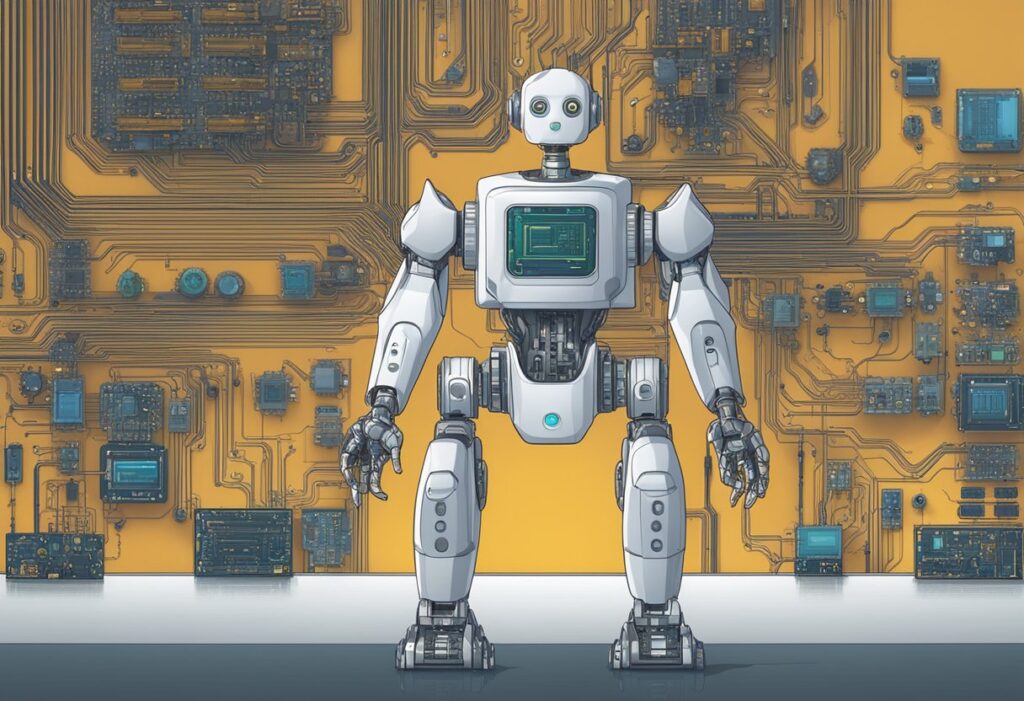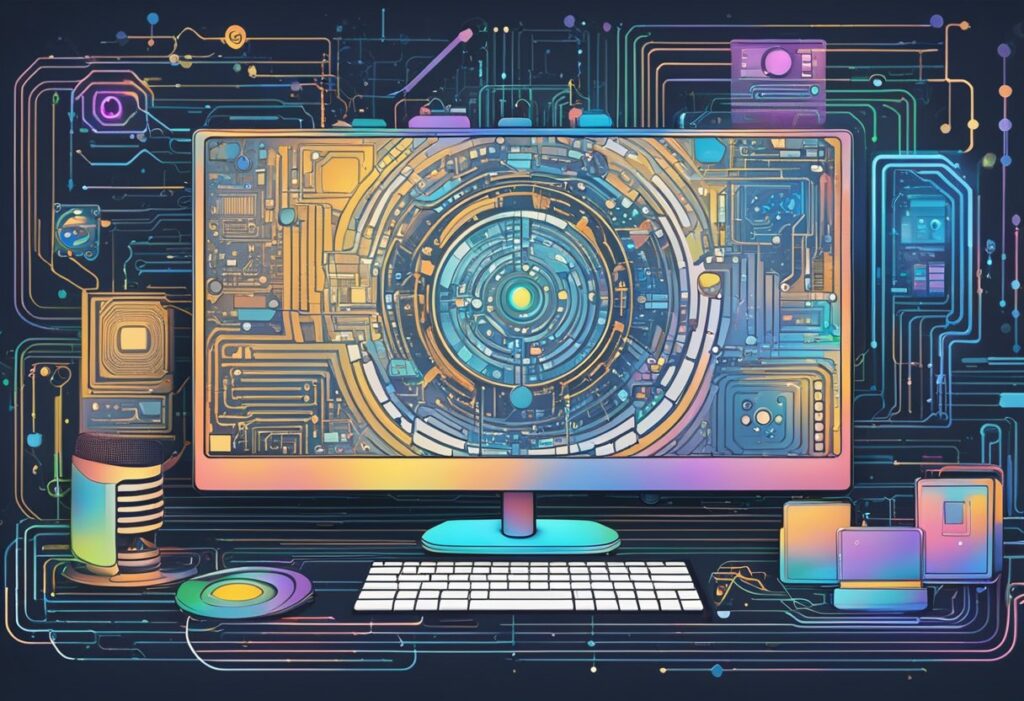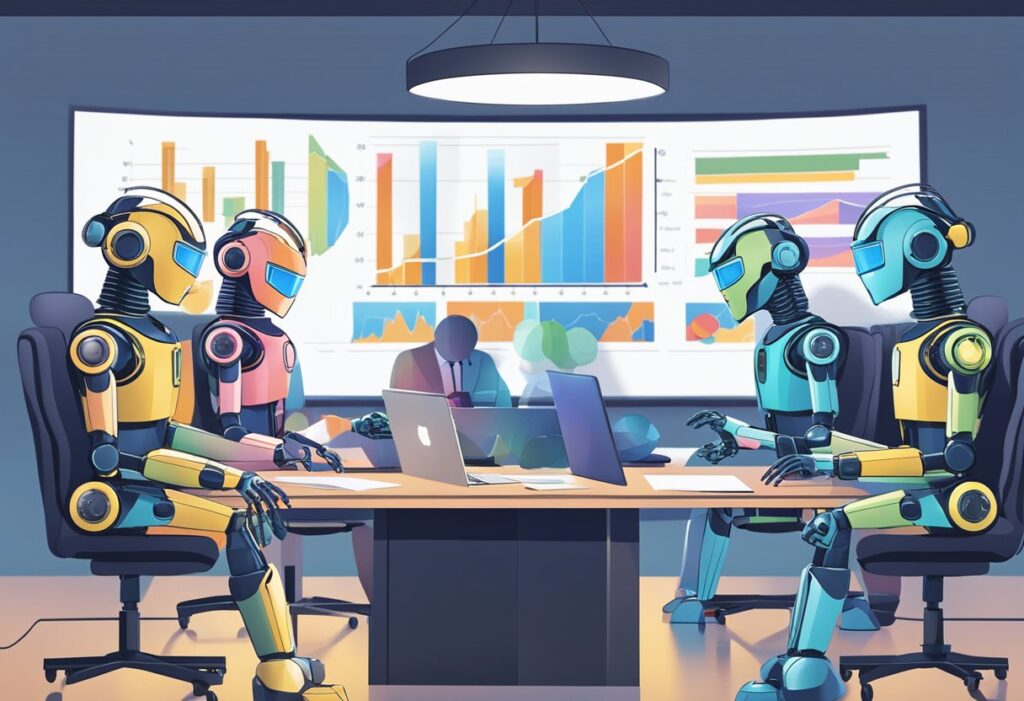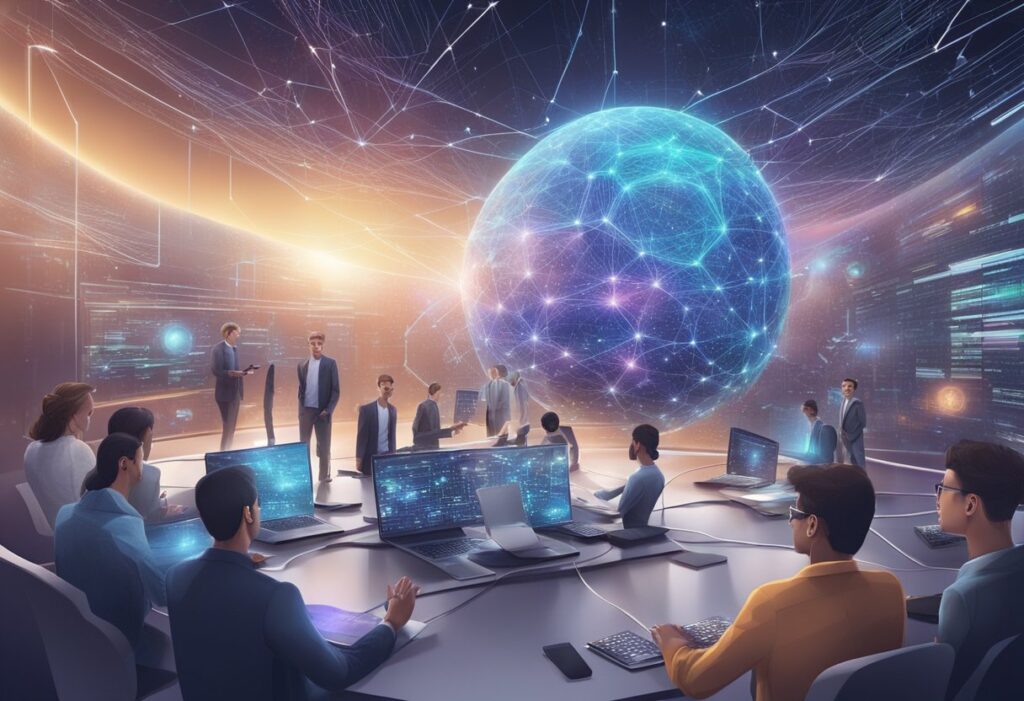Discover How AI 3.0 is Transforming Industries, Enhancing Daily Life, and Shaping the Future

Introduction
- What is Artificial Intelligence 3? Artificial Intelligence 3, often abbreviated as AI 3, represents the latest epoch in the evolution of artificial intelligence. This stage is marked by unprecedented advancements in machine learning, deep learning, and other cutting-edge technologies that have significantly enhanced the capabilities and applications of AI.
- The evolution of AI: From AI 1.0 to AI 3.0 The journey from AI 1.0 to AI 3.0 has been transformative. AI 1.0 laid the groundwork with rule-based systems and basic machine learning algorithms. AI 2.0 saw the rise of big data and more sophisticated algorithms, leading to significant breakthroughs in various fields. Now, AI 3.0 leverages these foundations to deliver even more powerful and efficient solutions, making intelligent systems more intuitive and integrated into our daily lives.
The Genesis of AI 3
- Historical context and advancements The evolution of AI has been a fascinating tale of innovation and persistence. AI 3’s roots can be traced back to the early days of computing when scientists and researchers first imagined machines capable of human-like thought processes. Over the decades, significant milestones, such as the development of neural networks and the advent of big data, have paved the way for the sophisticated AI systems we see today.
- Key innovators and milestones Key figures like Alan Turing, John McCarthy, and Geoffrey Hinton have been instrumental in the progression of AI. Milestones such as the creation of the first neural network, the development of the backpropagation algorithm, and the rise of deep learning have all contributed to the advent of AI 3. Each of these innovations has built upon the last, creating a cumulative effect that has propelled AI to its current state.
Core Technologies Driving AI 3
- Machine Learning and Deep Learning Machine learning and deep learning form the backbone of AI 3. These technologies enable systems to learn from data and improve over time without explicit programming. Deep learning, a subset of machine learning, uses neural networks with many layers (hence “deep”) to analyze various forms of data, leading to breakthroughs in image and speech recognition.
- Natural Language Processing (NLP) NLP allows machines to understand and respond to human language. Advances in NLP have led to more sophisticated chatbots, language translation services, and personal assistants like Siri and Alexa, which can understand and interpret complex human commands.
- Computer Vision Computer vision enables machines to interpret and make decisions based on visual input from the world. This technology is critical in applications ranging from medical imaging to autonomous vehicles, where understanding visual data is crucial.
- Reinforcement Learning Reinforcement learning involves training algorithms using a system of rewards and penalties, enabling machines to learn optimal behaviors through trial and error. This approach is particularly effective in dynamic environments like gaming and robotics.
AI 3 in Everyday Life

- AI in Healthcare In healthcare, AI 3 is revolutionizing diagnostics, treatment planning, and patient care. AI algorithms can analyze medical images with high accuracy, predict patient outcomes, and even assist in surgery.
- AI in Education Educational tools powered by AI 3 are personalizing learning experiences, providing tailored educational content, and offering real-time feedback to students. These tools are making education more accessible and effective.
- AI in Transportation Autonomous vehicles are perhaps the most visible application of AI in transportation. AI systems enable cars to navigate, avoid obstacles, and make decisions on the road, promising a future with fewer accidents and more efficient travel.
- AI in Entertainment From content recommendation engines on streaming platforms to the creation of AI-generated music and art, AI 3 is reshaping the entertainment industry, providing more personalized and engaging experiences.
Ethical Considerations
- Bias in AI algorithms Bias in AI is a significant concern. Algorithms trained on biased data can perpetuate and even amplify existing biases, leading to unfair and discriminatory outcomes. Addressing this issue is crucial for the equitable application of AI.
- Privacy concerns AI systems often require vast amounts of data, raising concerns about privacy and data security. Ensuring that personal information is protected and used responsibly is paramount.
- The impact on employment The automation capabilities of AI 3 have sparked debates about the future of work. While AI can enhance productivity, it also poses a risk to certain jobs, necessitating a shift in the workforce and the development of new skills.
AI 3 in Business

- Transforming customer service AI-powered chatbots and virtual assistants are transforming customer service by providing instant, 24/7 support, and handling routine inquiries, freeing human agents to tackle more complex issues.
- Enhancing business operations From predictive maintenance in manufacturing to optimizing supply chains, AI 3 is making business operations more efficient and cost-effective.
- AI in marketing and sales AI tools are enabling businesses to analyze consumer behavior, personalize marketing campaigns, and predict sales trends, leading to more effective marketing strategies.
AI 3 and Big Data
- The symbiotic relationship Big data and AI 3 have a symbiotic relationship; AI algorithms need large datasets to learn and improve, while big data analytics benefit from AI’s ability to derive insights from vast amounts of information.
- Data-driven decision making AI 3 enables organizations to make more informed decisions by analyzing trends, patterns, and anomalies in their data, leading to better outcomes and competitive advantages.
AI 3 and Robotics
- Intelligent robots and automation AI 3 is driving the development of intelligent robots that can perform complex tasks, from assembly line work to intricate surgical procedures, with precision and efficiency.
- Human-robot collaboration The future of robotics involves seamless collaboration between humans and robots, where robots handle repetitive tasks and humans focus on creative and strategic activities.
AI 3 in Finance

- Predictive analytics In finance, AI 3 is used for predictive analytics to forecast market trends, assess investment risks, and make data-driven trading decisions.
- Fraud detection and prevention AI systems are enhancing fraud detection by analyzing transaction patterns and identifying anomalies that may indicate fraudulent activity.
AI 3 and Cybersecurity
- Threat detection AI 3 is bolstering cybersecurity by detecting threats in real-time, analyzing network traffic, and identifying suspicious activities before they cause harm.
- Automated defense mechanisms AI-driven automated defense systems can respond to cyber threats more quickly and effectively than traditional methods, minimizing the potential damage.
AI 3 and Smart Cities

- Urban planning and management AI 3 is playing a crucial role in smart city initiatives, optimizing traffic flow, managing utilities, and improving public services to create more efficient and livable urban environments.
- Enhancing public safety AI technologies are being used to enhance public safety through advanced surveillance systems, predictive policing, and emergency response coordination.
The Future of AI 3
- Emerging trends and technologies The future of AI 3 includes advancements in quantum computing, edge AI, and more sophisticated human-AI interaction interfaces, promising even greater capabilities and applications.
- Predictions for the next decade Experts predict that AI will become increasingly integrated into our daily lives, transforming industries, creating new opportunities, and addressing global challenges.
Challenges and Limitations
- Technical hurdles Despite its advancements, AI 3 faces technical challenges such as developing explainable AI, improving algorithm transparency, and enhancing robustness against adversarial attacks.
- Ethical and societal challenges Addressing ethical and societal challenges, such as ensuring fairness, accountability, and the responsible use of AI, remains a critical focus for the AI community.
AI 3 and Human Creativity

- Collaborations in art and music AI 3 is collaborating with human artists to create new forms of art and music, pushing the boundaries of creativity and innovation.
- AI as a creative tool AI is becoming a valuable tool for creatives, offering new ways to explore ideas, generate content, and enhance artistic processes.
AI 3 in Scientific Research
- Accelerating discoveries AI 3 is accelerating scientific discoveries by analyzing large datasets, identifying patterns, and generating hypotheses in fields ranging from genomics to particle physics.
- AI in space exploration AI is playing a critical role in space exploration, assisting with mission planning, data analysis, and autonomous operations on distant planets.
AI 3 and the Environment
- AI in climate change mitigation AI 3 is being used to model climate change, predict environmental impacts, and develop strategies for mitigation and adaptation.
- Sustainable practices with AI AI is helping industries adopt sustainable practices by optimizing resource use, reducing waste, and improving energy efficiency.
Learning and Development in AI 3

- Educational programs and resources A growing number of educational programs and resources are available for those looking to learn about AI, from online courses to university degrees.
- Upskilling the workforce Upskilling the workforce to understand and work with AI technologies is crucial for maximizing the benefits of AI 3 and ensuring a smooth transition to an AI-driven future.
AI 3 and Global Collaboration
- International partnerships International partnerships and collaborations are essential for addressing global challenges with AI, fostering innovation, and ensuring the equitable distribution of AI benefits.
- AI for global good AI 3 has the potential to address pressing global issues, such as healthcare access, poverty alleviation, and disaster response, contributing to the greater good.
Case Studies of AI 3 Applications
- Successful implementations Examining successful implementations of AI 3 across various industries provides valuable insights and lessons learned, showcasing the transformative power of AI.
- Lessons learned Case studies highlight the challenges, successes, and key takeaways from AI 3 projects, offering guidance for future endeavors.
Conclusion
Reflecting on AI 3’s impact Reflecting on the profound impact of AI 3, it is clear that this technology has the potential to transform every aspect of our lives, from how we work to how we interact with the world around us.
Looking ahead to AI 4.0 As we look ahead to AI 4.0, the next phase of artificial intelligence promises even greater advancements, pushing the boundaries of what is possible and continuing the journey of innovation and discovery.